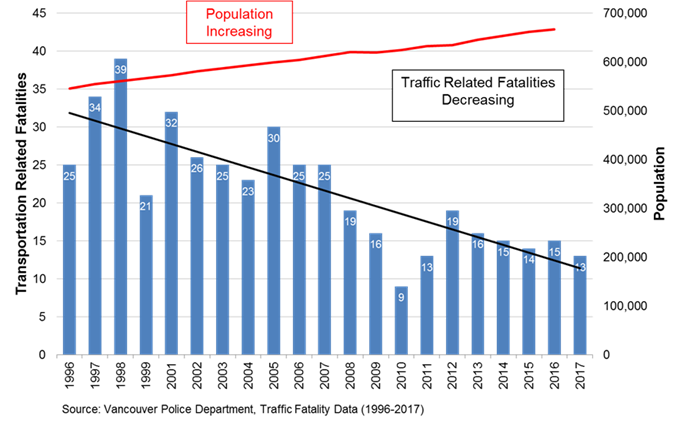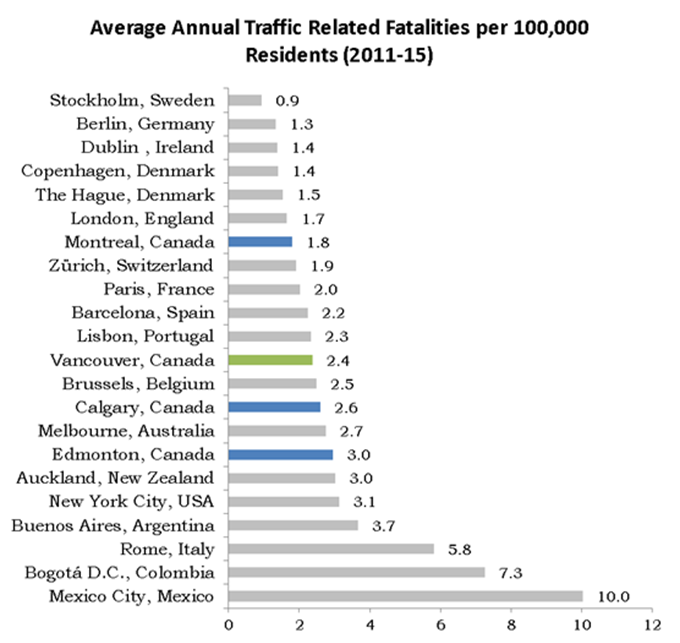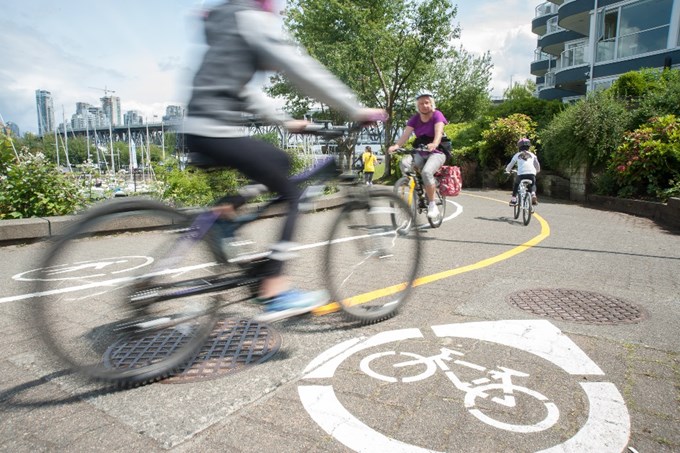Dale Bracewell, the City of Vancouver’s Transportation Planning Manager, has led huge changes to public transport, walking and cycling in the last decade. He recently spoke to Auckland Transport (AT) about what’s happening in the city and why people are choosing to walk and ride bikes.
Vancouver has changed dramatically in the last 10 years, and people are continuing to change their transport habits. What are the key projects the City of Vancouver has implemented to change how people travel?
How many people are using sustainable transport in Vancouver now?
As part of finalising the City of Vancouver’s Transportation 2040 Plan in 2012, we included some key implementation principles to guide our priorities for the first decade of progress.
Emerging areas of focus included the Broadway Subway, our next rapid transit extension, improving our False Creek Bridges for people walking and cycling, launching a public bike share system and building a cycling network designed for people of all ages and abilities.
We also created a more robust monitoring program and have now reached our 2020 target where half (50 per cent) of Vancouver trips are taken by sustainable modes.
Change can be hard for residents, businesses and neighbourhoods. What are your key tips for working with communities that might face months of disruption?
Engaging with the community is extremely important in every phase of the project – on the long-term vision, the design options, and the construction impacts. We have a multi-phase engagement process during which we do our best to involve key partners and stakeholders, local residents and businesses, under-represented groups and the broader public.
Considering how people with such a broad range of interests can be involved and influence decisions at every stage, it helps ensure a good design and a successful project.
The construction phase, in particular, can be a big challenge, especially for immediate residents and businesses. There are a number of ways the City tries to mitigate the impact of construction on communities.
Two notable recent ways we’ve improved our work in this area are: in 2015, we created “Community Liaison” positions as the first point-of-contact for local residents and businesses during large construction projects.
People in these roles help to provide proactive communication to the community and work to address challenges and concerns as they arise. In 2016 the City also established a Project Management Office to coordinate projects over multiple years – e.g. dig once to minimize long-term disruptions.
Vancouver has invested in cycling and walking infrastructure. How has this changed the urban environment and are communities welcoming them?
As per T2040 goals, Vancouver has invested significantly in the improvement of the walking and cycling realm, with a focus on achieving 2/3 of all trips via sustainable modes. The urban environment has changed with improvements in the public realm that makes it more inviting to walk and cycle.
By incorporating traffic calming measures, treed boulevards, cycling buffers, corner bulges and others, we are providing for not just a safer, but also a more enjoyable and convenient environment for those choosing to walk and ride their bicycles. Communities generally welcome these type of improvements as these are considered amenities. Road closures that turn into public spaces (i.e. parks or plazas) have received more significant support from residents.
Has road safety also improved?
Transportation-related fatalities have been decreasing in the last 21 years, while population is increasing. However, one traffic fatality is too many.
We continue enhancing our infrastructure and working with partners to improve safety and reach our target.

Fatality rates in Vancouver are low compared to other peer cities, but there is still room for improvement.

Serious injuries rates per trip have decreased for cyclists and remained steady for pedestrians and vehicle occupants.

What three things do you think cities should consider to help deliver more transport options?
Firstly, it is important to have a comparable guiding policy document (such as our Transportation 2040 plan) for each city that is custom to their urban context and sustainable transport journey to date. Creating the long-range plan should involve both residents and businesses and be supported by City Council to the steadfast guide for the delivery of projects with bold and measurable mobility and safety targets.
Secondly, major projects should also involve significant engagement with the community and monitoring of the positive changes of the completed project should be a normal part of the process.
Thirdly, cities should maximize their opportunities to coordinate and partner on delivering their key transport projects to maximize their journey to safer, more convenient and a wider range of sustainable mobility options for people of all ages and abilities.


